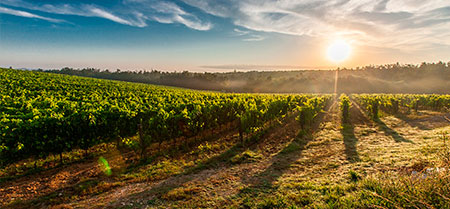Introduction to biomass, concept
The term biomass refers to the organic matter that is produced in green plants through the process of photosynthesis, as well as that originated in the transformation processes of the first, considering both those that occur naturally and artificially.
That is, the energy of biomass comes from the Sun. Plants and animals absorb and store a part of the solar energy that reaches the earth in the form of food and energy. When this happens, byproducts are also created that are not useful for living beings nor can they be used to make food, but can be used to make energy from them.

The formation or transformation of organic matter must be recent, which excludes from the term fossil fuels (coal, oil and natural gas), whose formation took place millions of years ago.
Biomass was the most important energy source for humanity until the beginning of the industrial revolution, when it was relegated to second place due to the massive use of the aforementioned fossil fuels.
Energy use
The most direct way to extract and use the energy contained in biomass is through a combustion process, in such a way that its chemical energy is transformed into thermal energy. This procedure is suitable as long as the biomass has good properties as fuel.
However, it cannot always be used directly.
In general, it can be said that biomass does not have good characteristics for direct use, since it has a very low energy density and a high degree of humidity. This means that, on many occasions, it is necessary to subject the biomass to some type of treatment that allows obtaining substances with better characteristics as fuel.
The different types of treatments that are usually used can be classified into three groups: extraction processes, thermochemical processes and biochemical processes.
Extraction processes: In the structure of some types of biomass there are substances with a high calorific value, where what is interesting is to be able to separate them from the rest to be used directly as fuel. In these cases, the biomass is subjected to an extraction process to separate the substance of interest. Some energy crops, as well as some waste from food processing and manufacturing, are examples of the type of biomass that is treated in this way.
Thermochemical processes: They are based on the thermal decomposition of biomass under different oxidation conditions. When the process is carried out with excess oxygen, there is a combustion process; when there is a certain restriction in the oxygen supply, it is a gasification process; and when it is carried out in the total absence of oxygen, there is a pyrolysis process. The type of biomass that is usually suitable for this type of process is dry biomass, normally agricultural and forestry waste and urban solid waste.
Biochemical processes: They are processes in which, through the direct action of microorganisms, the decomposition of biomass into simpler substances with a high energy content occurs. The processes most used are alcoholic fermentation, obtaining ethanol, and anaerobic digestion, producing methane. These types of processes are used with biomass that has a high degree of humidity, such as urban wastewater or organic wastewater, livestock waste and residual liquor.
Biomass plants
Biomass plants are defined as industrial facilities designed to generate electrical energy from biological resources. Thus, biomass plants use renewable sources for the production of electrical energy.
Powers of up to 50MW can be obtained by generating electricity through thermochemical processes.
Operation of a biomass power generation plant
When the main fuel from the facility arrives at the plant, it is classified according to its size (if necessary it is treated to reduce said size) and is subsequently stored for transformation.

Firstly, a biomass energy recovery plant must have a pretreatment system for said biomass, whose main purposes are to reduce the humidity it contains, adapt the size and uniformity of the raw material, in order to standardize the entry conditions into the boiler and achieve the greatest efficiency of the combustion system.
Once the thermal energy is released in an appropriate furnace, the gases released in combustion, composed of CO2 and H.2Or mostly together with other solid and gaseous substances, they exchange their heat in a boiler through which water circulates, and which is normally converted into steam at a certain pressure and temperature. The combustion gases from the biomass pass through the boiler, giving up their energy to water/steam.
The pressurized steam formed in the boiler is then transported to a turbine, where it expands, producing a new energy transformation by which the potential energy contained in the pressurized steam is converted first into kinetic energy, and then into rotating mechanical energy.
The turbine shaft is connected to an electrical generator, which is responsible for the last energy transformation carried out in the plant, the transformation of rotating mechanical energy into electrical energy.
Don't miss the opportunity and find out about our Professional Master in Efficient Management of Renewable Energy.



































